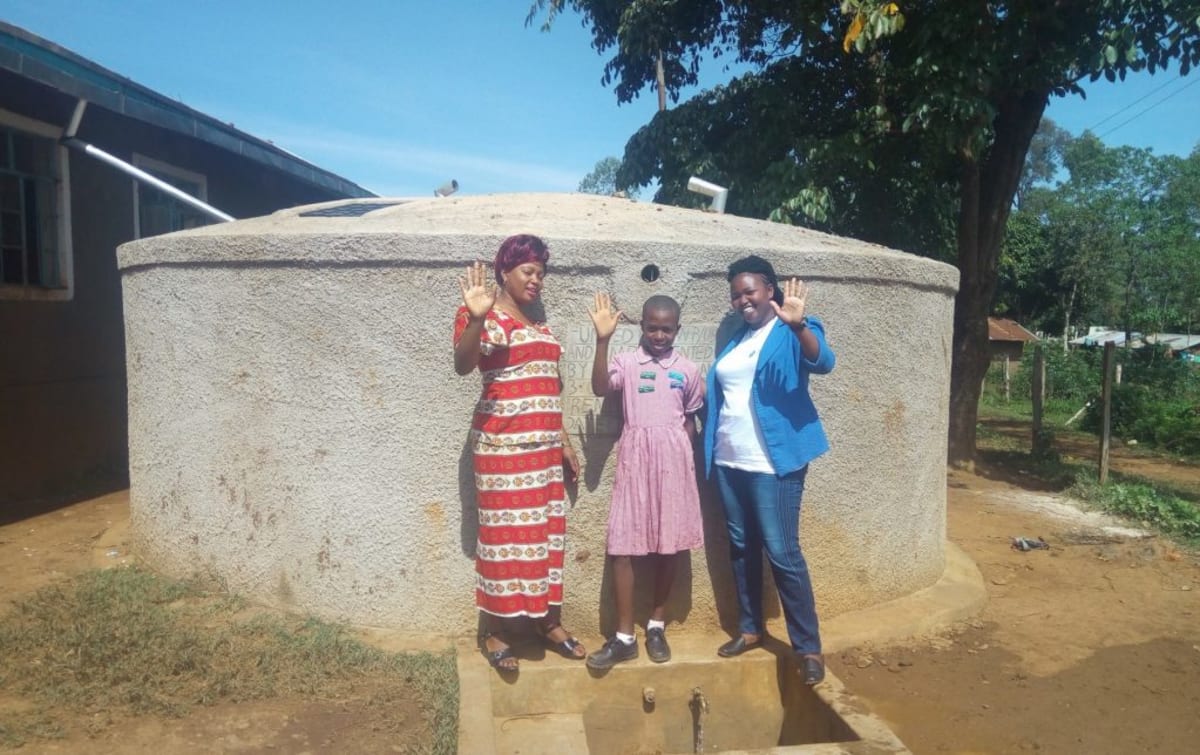This project is a part of our shared program with Western Water And Sanitation Forum (WEWASAFO). Our team is pleased to directly share the below report (edited for clarity, as needed).
Welcome to the School
St. Micheal Irenji Primary School was started in the year 2013 by its sponsor, the Catholic Church. Their aim was to give children something productive to do during the day; children would often spend the days playing at the stream, and were prone to drowning without proper supervision.
The school now has 378 students and employs 12 teachers and three support staff.
A normal day for students starts at home, where they work to complete chores for their families. When finished, they rush to make it to school on time for morning lessons. The first thing they do upon reaching school is rush back out to the stream to fetch water. When they've fetched what they need, they proceed clean classrooms and school grounds. Students and staff assemble at 8am for morning announcements, and then break off for their regular classes.
Rental houses in Kakamega are becoming too expensive due to rapid growth. The field officer actually came across this school in looking for a house to rent. They bumped into a landlady, who also happened to be the headteacher at St. Micheal Irenji Primary School. During their discussion, our staff mentioned what they do for a living and the headteacher was amazed, saying that she had been searching for just such an organization to help alleviate suffering at her school.
Water Situation
The school does not have a water source or proper water storage. The pupils are forced to go out and collect water from passing streams, and sometimes they are requested to carry water from home too. A lot of time is wasted as pupils are forced to leave their classes and go get water for drinking and for the school cook to make lunch.
So much time is wasted as students leave class for water, but it gets worse - most also suffer from waterborne illnesses like typhoid after drinking that water. After our meeting right when we were about to leave the school, we witnessed a student arriving at the head office to ask the headteacher for permission to go home. He had a severe stomachache and diarrhea. This was because of drinking dirty water from the stream.
Teacher Madam Regina said, "Children are very fragile, thus when exposed to hard conditions in life they find it hard to cope and thus suffer a lot. Water shortage is a major concern in this school, thus most pupils are affected and this has also contributed negatively to the school performance."
Sanitation Situation
During the our first visit to the school, it became clear that the sanitation level need to be addressed. There are only four pit latrine doors for girls, three doors for boys, and only two doors for teachers. And because there isn't enough water, the sanitation of these latrines is entirely ignored.
In addition, the school has improvised two hand-washing facilities to try and improve hygiene among the students. But still, these pupils have not learned the importance of washing their hands properly - from a distance you could see how hurriedly they dipped their hands under the water.
Plans: Hygiene and Sanitation Training and Hand-Washing Stations
Training will be held for three days. The facilitator will use PHAST (participatory hygiene and sanitation transformation), ABCD (asset-based community development), CTC (child to child), lectures, group discussions, and handouts to teach health topics and ways to promote good practices within the school. The CTC method will prepare students to lead other students into healthy habits, as well as kickstart a CTC club for the school. This CTC club will oversee the new facilities, such as hand-washing stations, and make sure they are kept clean and in working condition. The two hand-washing stations will be delivered to the school, and the club will fill them with water on a daily basis and make sure there is always a cleaning agent such as soap or ash.
Plans: VIP Latrines
Two triple-door latrines will be constructed with local materials that the school will help gather. Three doors will serve the girls while the other three serve the boys. And with a new source of water on school grounds, students and staff should have enough to keep these new latrines clean.
Plans: Rainwater Catchment Tank
A 50,000-liter rainwater catchment tank will help alleviate the water crisis at this school. The school will also help gather the needed materials such as sand, rocks, and water from the spring for mixing cement. Once finished, this tank can begin catching rainfall that will be used by the school’s students and staff. Students will no longer be responsible to find enough water to carry to school every day.
We and the school strongly believe that with this assistance, standards will significantly improve. These higher standards will translate to better academic performance!

 Rainwater Catchment
Rainwater Catchment
 Rehabilitation Project
Rehabilitation Project



































